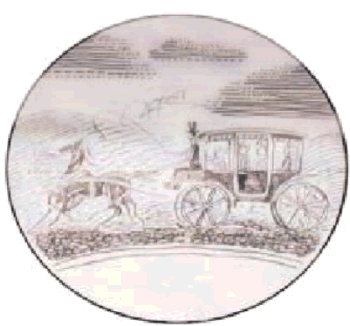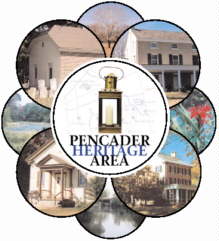 After the United States government was established the attempt to build federally funded roads proved unsuccessful. With the job
left to the local government, which had very little money available to do the job, the next best thing was the idea of the turnpike. The
turnpikes were highly improved roads made of anything from natural earth to hard surfaces of gravel, stone or even wood. The Turnpike Company was a corporation formed to build roads and was among the leading pioneers in the field of business organization. In order for this business venture to work it was necessary for the government to pass laws granting the right of eminent domain and the power to build a road for public use and to collect tolls for its use.
After the United States government was established the attempt to build federally funded roads proved unsuccessful. With the job
left to the local government, which had very little money available to do the job, the next best thing was the idea of the turnpike. The
turnpikes were highly improved roads made of anything from natural earth to hard surfaces of gravel, stone or even wood. The Turnpike Company was a corporation formed to build roads and was among the leading pioneers in the field of business organization. In order for this business venture to work it was necessary for the government to pass laws granting the right of eminent domain and the power to build a road for public use and to collect tolls for its use.
Most turnpikes were not built until after the war of 1812 when the control of the waterways was restored. During the war practically all supplies had to be moved by overland routes.
Corporations were formed and chartered by the state for the specific purpose of building a road. Stocks were sold to finance
the project with the stockholders hopefully receiving a return on the stocks. Joseph A. Durrenberger, an authority on early turnpike
development, believed that a majority of those stockholders were not interested in making a profit but were contributing to
public improvements. They were local farmers, merchants, or land speculators who hoped their chief returns would be improved
commerce, increased land value, and increased manufacturing.
For Northern New Castle County, more specifically the New Castle and Frenchtown Turnpike, the turnpike was only part of the North South transportation route. To complete the trip steamboats were introduced on the Delaware River and the Chesapeake River.
The first part of the New Castle and Frenchtown Turnpike was built by the New Castle Turnpike Company in 1812 and went from
New Castle to Clark's Corner, which was less than three miles. The New Castle and Frenchtown Turnpike, which connected New
Castle, Delaware to Frenchtown, Maryland, started construction in April 1813 with John Crow surveying to find the route with the
shortest distance and most favorable topography. Construction of the turnpike was under the supervision of men who had no
professional engineering knowledge and it was assumed that the only requirement was common sense. The turnpike was completed
and approved to the Maryland line on May 17, 1815; and the Maryland Levy Court approved the remainder of the distance to
Frenchtown the following year. When completed the fifteen miles of gravel turnpike cost $37,223.74. The turnpike was divided into
sections with a toll keeper at each section. The toll for using just a five mile stretch was: "every score of hogs, six cents; "' every score of cattle, twelve cents; for every sulkey, chair or chaise, with one horse and two wheels, six cents, and with two horses and four
wheels, twelve cents; ' for horse drawing the same; for every cart or waggon, or other carriage of burthen, the wheels of which do not in breadth exceed four inches, four cents for each horse drawing the same." ( Laws of the State of Delaware, IV, 249-250.)
During the years of its operation the Frenchtown Turnpike underwent problems with not being able to support itself due to the
difficulty in collecting tolls. By law it had to be maintained in good passable condition for if not, the local judge could order that no
tolls could be collected in sections that did not pass inspection. Every effort was made for the upkeep of the road surface but heavy
rains and harsh winters took a toll of its own. In 1830 the two turnpike companies merged and formed a single firm, the New
Castle and Frenchtown Turnpike and Railroad Company.
|
